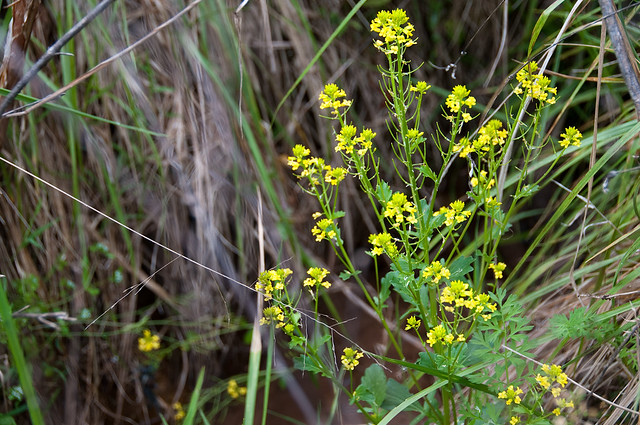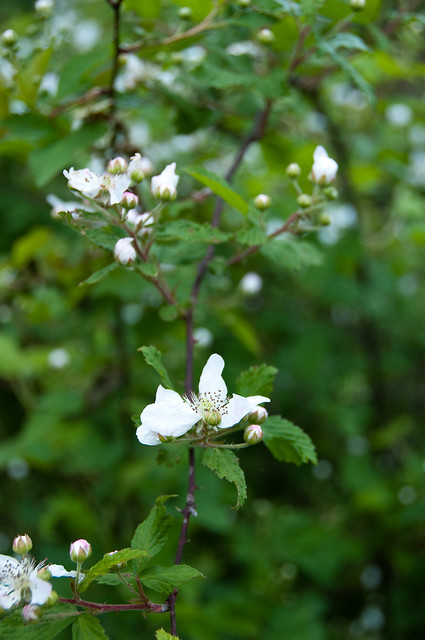 |
| Ranunculus bulbosus (Bulbous Buttercup) |
This pretty yellow perennial weed was just about everywhere, including in the lawn. Pretty easy to yank out, too, since it is considered toxic to livestock when fresh (but is okay if harvested and dried).
 |
| Salvia lyrata (Lyre-leaf Sage) |
This herbaceous perennial grew mostly by the creek, and I had a devil of a time identifying it at first because the first specimen I picked must have been more mature and didn't resemble anything in the Audubon book. Wikipedia tells me that the root can be used as a salve for sores or the whole plant as a tea for colds and coughs.
 |
| Alliaria petiolata (Garlic Mustard) |
This herbaceous biennial does have a faint garlicky scent when you rub the leaves between your fingers and can supposedly be used in salads and pesto. So I'll be ripping it out left and right because it's considered super invasive and hurts innocent little butterflies!
 |
| Brassica nigra (Black Mustard) |
This mustard is not invasive (but not native either), and the seeds are known to make a bitchin' curry sauce, so I won't be quite so vigilant in removing it. If it's good enough for Jesus, it's good enough for me.
 |
| Geranium maculatum (Wild Geranium) |
For a while I was saying in my head "germanium". You can laugh. A pretty plant that is even sometimes cultivated in gardens. Which means I will be cultivating it because you can't beat free plants.
 |
| Rosa multiflora (Multiflora Rose) |
 |
| Just a wee bit obnoxious. |
Apparently, this is also very invasive, but goats love it. But we're still not getting goats. It was originally introduced to be used as a living hedge, among other things, so maybe I can force it into submission and use it for natural fencing since it's right near the barn.
 |
| Salvia lyrata (right), Geranium maculata (middle), and Magnolia tripetala (Umbrella Magnolia) flowers... |
The magnolia tree is not on our place but is on the side of the road leading to us. It's actually not the best smelling magnolia (described as "disagreeable" in the Audubon book), but they sure are pretty trees.
And that concludes our wildflower (and one shrub) tour of the holler. Wasn't that exciting??
~ Mitsy

No comments:
Post a Comment